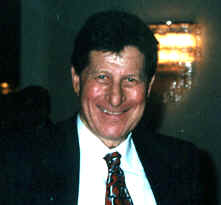The Art of
Chemical Grafting

Research & Development
Chemical Research & Development Services
NASD: PROA
Polymer
Research Corporation
2186 Mill Avenue
Brooklyn, NY 11234

Dr. Carl
Horowitz
Chairman, President and
Chief Executive Officer
Interview
conducted by:
Diane Reynolds, Co-Publisher
CEOCFOinterviews.com
April 2001
Bio of CEO
I am a
graduate of Columbia University where I studied under Professor Fink who is a famous
authority on Electrochemistry. After
graduating, I enrolled at the Polytechnic University in Brooklyn. At that time, I was studing under Professor Herman
Mark, who is the father of Polymer Chemistry and he gave me the introduction into Polymer
Chemistry. After working for 13 years in a
battery company in New York, I opened my own company with a partner. We came out with an idea to do research work for
other companies. After a while, I developed a
method of chemical attachment called chemical grafting patents and patent applications,
which we are using now to solve problems for other companies. We do research work for hundreds of different
fields. Chemical grafting is adaptable to any
phase of manufacturing for any company who wants to improve their product or make it more
competitive or to fulfill government regulations. We
have been very successful in that area and we will continue to do it and we intend to
expand in that area in the future.
CEOCFOinterviews – Tell us about your company whether it be
products or services.
Dr.
Horowitz –
We have a method of attachment of different chemicals.
We call these chemicals monomers. Monomers
are building blocks of polymers. For example,
styrene is a monomer. Polystyrene is a
polymer, which consists of chains of monomers of styrene.
However, our process is different. We’ve
taken an existing item, which we call substrate, which belongs to the client, and we grow
those chains of monomers on the backbone of the existing item. For example, if we grow on the backbone of cotton
a chain of monomers containing phosphorus and chlorine, that cotton will become
permanently nonflammable. If we grow on the
backbone of a plastic like polyolefine we grow on it dye able monomers, the whole
polyolefine becomes dyeable. This is more or
less what grafting consists of. We have
numerous patents in that field.
CEOCFOinterviews – How many manufacturing plants do you have?
Dr.
Horowitz – We
have two. One is in Brooklyn, New York where
we have about 20 scientists working to satisfy the clients’ demands in solving his
problem. Once his problem is solved we come
up with a formula and that formula is then offered to the client on an exclusive basis and
we manufacture in our plant large quantities of the formulation that we have developed for
the client. The other plant is in
Phoenix, AZ where a former employee of our company opened a western branch and she is
doing the same thing on a smaller scale.
CEOCFOinterviews – Do you do this on a global basis?
Dr.
Horowitz –
Yes. We do this worldwide in almost every country in Europe, in the Far East, North
America Australia, Japan and Mainland China.
CEOCFOinterviews
- What is your strategy for the future?
To
receive a complete copy of this interview call: 570-839-0236
|